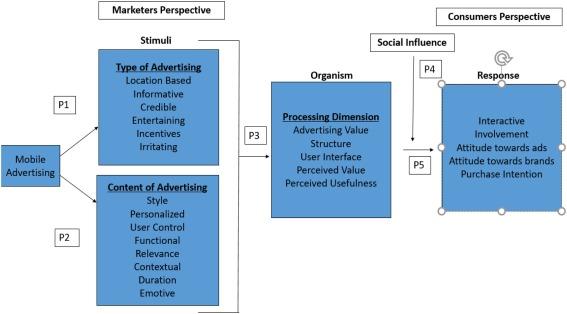Navigating VR/AR Integration: Key Strategies for Overcoming Curriculum Challenges
Virtual Reality (VR) and Augmented Reality (AR) are revolutionizing educational environments, transforming passive learning into vibrant, interactive experiences. Yet, many educators and institutions face notable curriculum integration challenges when incorporating these innovative technologies. In this comprehensive guide, we’ll explore essential strategies to overcome obstacles, maximize VR/AR benefits, and seamlessly align immersive technology with educational goals.
Understanding VR/AR in Education
Virtual reality immerses users in a simulated environment, while Augmented Reality overlays interactive digital elements on the real world. Both technologies empower students to visualize complex concepts, engage actively with content, and develop real-life skills through experiential learning. however, their adoption in classrooms comes with unique challenges to curriculum planning, delivery, and assessment.
Common Curriculum Challenges with VR/AR Integration
- Alignment with Learning Objectives: Ensuring that immersive activities support curriculum standards and educational goals.
- Accessibility and Inclusivity: Making sure all students, regardless of background or ability, benefit equally from VR/AR experiences.
- Teacher Training and Competence: Equipping educators with the skills and confidence to design and facilitate VR/AR lessons.
- Resource and Cost Constraints: sourcing appropriate hardware, software, and support within budget limitations.
- Assessment and Evaluation: Developing effective methods to assess learning outcomes in immersive environments.
proven Strategies for Integrating VR/AR into the Curriculum
1. Start with Clear Curriculum Mapping
Begin by identifying curriculum areas where VR/AR can address learning gaps or enhance student engagement. Map technology-enabled activities directly to standards and intended outcomes. For example, use VR field trips to complement geography lessons or AR simulations to visualize scientific phenomena.
2. Focus on Accessibility and Inclusivity
- Choose platforms with multi-device compatibility (smartphones, tablets, headsets).
- Offer option activities for students with sensory restrictions or disabilities.
- Design guided sessions with peer support to foster collaborative, equitable learning.
3. Invest in Teacher Professional Development
Successful VR/AR integration hinges on educator proficiency. regular training workshops, online tutorials, and collaborative planning sessions can help teachers build confidence and share best practices for immersive lessons.
4. select Cost-effective, Scalable Solutions
- Leverage open-source VR/AR resources and free educational apps.
- Begin with pilot programs to test content and measure impact before school-wide adoption.
- Seek partnerships with technology companies or apply for grants to support acquisition and training.
5. Develop Robust Assessment Methods
Assessment in immersive learning settings should be authentic, practical, and aligned with curricular goals. Use formative assessments like reflective journals,project-based tasks,or in-app analytics to track progress and adapt instruction. Incorporate peer and self-assessment for deeper engagement.
Benefits of VR/AR Integration in Education
Integrating VR and AR technologies into curricula yields significant advantages:
- Enhanced Engagement: immersive content boosts student motivation and participatory learning.
- Deeper Understanding: Visualizing abstract concepts fosters mastery, especially in STEM subjects.
- Retention & Recall: Experiential activities improve memory and long-term retention.
- Safe Simulation: Students can practice real-world scenarios (e.g., medical procedures, scientific experiments) without risk.
- Personalized Learning: VR/AR platforms can tailor challenges to individual learners’ pace and ability.
Case Studies: Successful VR/AR Curriculum Integration
Case Study 1: VR in High School Geography
Challenge: Low engagement with static maps and readings.
Solution: A high school piloted VR “global expeditions”—letting students experiance landscapes and cultural sites firsthand. activity links were mapped to geographic standards and incorporated as project-based modules.Results showed increased participation and improved spatial awareness.
Case Study 2: AR in Elementary Science
Challenge: Difficulty visualizing the solar system and planetary motion.
solution: Using tablet-based AR, students explored interactive models and participated in collaborative scavenger hunts.Teachers noted higher comprehension, and learners reported greater enjoyment and interest in science topics.
Practical Tips for Educators
- Start small—pilot one AR/VR lesson per term and expand as you gain experience.
- Engage students in co-creating VR/AR content to boost ownership and creativity.
- Share experiences and resources with fellow educators via online communities or workshops.
- Monitor student feedback regularly to adapt and improve the implementation process.
- Protect student privacy—review app data policies and discuss online safety.
First-hand Experience: A Teacher’s Outlook
“Bringing VR into my classroom was daunting at first, but students responded enthusiastically. Once we established weekly sessions and tied activities to our science standards, their engagement soared. Collaborating with other teachers was key—sharing wins and troubleshooting tech issues together made the transition smoother. Today, students regularly ask for more immersive lessons, and the curriculum feels more dynamic than ever.”
— Ms. Dana Rodriguez, 7th Grade Science Teacher
Conclusion: Pathways to Successful VR/AR Curriculum Integration
The journey toward effective VR/AR integration in education requires strategic planning, commitment to inclusivity, and ongoing professional development. By starting with clear objectives, investing in support, and fostering collaborative approaches, educators can unlock the transformative potential of immersive technologies.
As adoption grows, sharing experiences and challenges will pave the way for innovative, accessible, and meaningful learning. By navigating curriculum challenges thoughtfully,we not only enhance student outcomes,but also prepare learners for a technology-driven future.
Looking to Integrate VR/AR in Your School?
Empower your educators and inspire your students with immersive learning opportunities.Explore the latest VR/AR platforms, mobile-ready solutions, and training resources to kickstart your school’s journey today!

